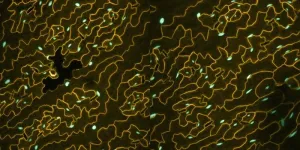(Press-News.org)
BOSTON – Telemedicine visits for cancer care may not only be more convenient and easier to schedule than in-person appointments, they're also better for the planet, new research by Dana-Farber Cancer Institute scientists shows.
Based on an analysis of data from a regional cancer center, the researchers calculate that, nationwide, cancer care that utilizes telehealth and local care would generate 33.1% less greenhouse gas emissions than the traditional model of in-person care, primarily because of reduced travel to medical appointments. The findings presented today at the annual meeting of the American Society of Clinical Oncology (ASCO) and published simultaneously in the journal JAMA Oncology, suggest that an approach to care adopted during the COVID-19 pandemic can have significant environmental benefits.
"While health care in the United States provides health benefits to many people, it generates substantial amounts of greenhouse gas emissions that drive climate change and inadvertently harm health," says Andrew Hantel, MD, a faculty member in the Divisions of Leukemia and Population Sciences at Dana-Farber who led the study with Gregory Abel, MD, MPH, a senior physician at Dana-Farber, and Jonathan Slutzman, MD, of Massachusetts General Hospital. "We wanted to explore the potential reductions in emissions that can be achieved with a decentralized approach to cancer care that includes telehealth. To do so, we used data generated during the 'natural experiment' of the pandemic, when care shifted from an in-person to a telemedicine-preferred model."
The researchers calculated the amount of carbon dioxide emitted per visit-day at Dana-Farber during two time periods: March-December 2020, when the pandemic prompted the Institute to shift largely to telemedicine; and March 2015-February 2020, when a traditional in-person model was in place. (A visit-day is the combined visits a person has at a healthcare facility in a single day.)
They began by listing all the components of a clinical visit, both in-person and telehealth. For in-person visits, that includes everything that happens from the time a patient leaves home for an appointment until the time they return – such as driving to the hospital, parking the car, taking the elevator to the clinic, using hand sanitizer, using the bathroom, and driving back home. They also factored in the use of electricity for lights and computers, even the paper that covers the exam room table. Using a variety of databases, they then determined the carbon dioxide emissions associated with each of these. (For products like hand sanitizers, there is data on the number of emissions used in making and disposing of each of their constituent parts.)
For telehealth visits, there were far fewer aspects to track – mainly, computer and internet usage by the patient and clinician.
They found that per visit-day emissions of carbon dioxide at Dana-Farber were 36.4 kilograms lower during the telemedicine period than the in-person period, an 81.3% decline. They then calculated what emissions levels during the pre-pandemic period would have been if telemedicine had been in place and extrapolated it to the whole U.S. population. They found that CO2 emissions would have been reduced by 75.3 million kilograms, a 33.1% drop. (The more modest decline on a national level than at Dana-Farber reflects differences between the national population and those treated at Dana-Farber, such as the higher proportion of patients with rare cancers, Hantel explains. Patients with more uncommon cancers often travel further to receive care, resulting in higher emissions levels.) At the national scale, the 75.3-million-kilogram decline in CO2 corresponds to a modest reduction in human health harms (15.0-47.7 disability adjusted life-years).
"Telemedicine, and decentralized oncology care in general, involve a complex balance of risks and benefits that vary across the population," Hantel observes. "On the plus side, they can increase the reach of expert care while reducing travel, time, and cost for patients. But they also have the potential to add rather than replace visits, which may be difficult for older adults and those without good internet connections, and in some cases may reduce clinicians’ ability to appropriately diagnose and treat. Our findings add another layer to this conversation, showing that emissions reduction is an additional benefit of this approach to care."
About Dana-Farber Cancer Institute
Dana-Farber Cancer Institute is one of the world’s leading centers of cancer research and treatment. Dana-Farber’s mission is to reduce the burden of cancer through scientific inquiry, clinical care, education, community engagement, and advocacy. We provide the latest treatments in cancer for adults through Dana-Farber Brigham Cancer Center and for children through Dana-Farber/Boston Children’s Cancer and Blood Disorders Center. Dana-Farber is the only hospital nationwide with a top 10 U.S. News & World Report Best Cancer Hospital ranking in both adult and pediatric care.
As a global leader in oncology, Dana-Farber is dedicated to a unique and equal balance between cancer research and care, translating the results of discovery into new treatments for patients locally and around the world, offering more than 1,100 clinical trials.
###
END
The timing of our brain waves shapes how we perceive our environment. We are more likely to perceive events when their timing coincides with the timing of relevant brain waves. Lead scientist Sanne ten Oever and her co-authors set out to determine whether neural timing also shapes speech perception. Is the probability of speech sounds or words encoded in our brain waves and is this information used to recognise words?
The team first created ambiguous stimuli for both sounds and words. For instance, the initial sounds in da and ga differ in probability: ‘d’ is more common than ‘g’. The Dutch words dat “that” and gat “hole” ...
About The Study: This quality improvement analysis of clinical trials for metastatic breast, lung, colon, pancreatic, and prostate cancers found that a large proportion of the U.S. population lived within 30 miles of a clinical trial site. This finding suggests that while many clinical trials are available, they are not evenly distributed across the country and may not be accessible to all individuals, particularly racial and ethnic minority individuals. This disparity in access to clinical trials raises important questions about equity and fairness in the distribution of health care resources and opportunities ...
Portland State will power up a new high-performance computing cluster that will give researchers at universities and colleges across Oregon the ability to advance computing-intensive research projects by processing large datasets and performing complex computations in a fraction of the time — thanks to a nearly $1 million grant from the National Science Foundation’s Campus Cyberinfrastructure program.
The Oregon Regional Computing Accelerator (Orca) aims to provide free-of-cost computing resources and cyberinfrastructure ...
It’s in your heart and liver, in the vegetables you eat, in the rogue cells that cause cancer. Those who live in temperate regions are surrounded by more of it than people who live in the tropics, and without it, humans wouldn’t exist.
It’s called polyploidy, and only within the last few years have biologists begun to recognize its significance across the tree of life.
“It’s one of the most important biological processes that hardly anybody knows about,” said Doug Soltis, a distinguished professor at the Florida Museum of Natural History.
Soltis is one of 18 scientists who have received a combined ...
SAN ANTONIO — June 3, 2024 — Southwest Research Institute will enhance models to strengthen the earthquake resilience of America’s transportation infrastructure and improve public safety in earthquake-prone areas. As part of a contract with the U.S. Federal Highway Administration (FHWA), an SwRI-led team will update and improve liquefaction models. Liquefaction occurs during an earthquake when intense shaking causes soil to temporarily act more like a fluid, losing its capacity to support roads and structures.
“For highways specifically, sometimes state and ...
Unraveling the behavior of plasma increasingly requires intensive computing resources. That’s why plasma demands a calculated approach to computation.
As the new head of computational sciences at the U.S. Department of Energy’s (DOE) Princeton Plasma Physics Laboratory (PPPL), Shantenu Jha is excited to be at the helm of the Lab’s computing efforts, fusing computer science expertise with PPPL’s pioneering research into the fourth state of matter.
“I want to continue to grow the excellence that already exists in computing for fusion energy at PPPL, which ...
CLEVELAND—A new study by researchers at the Case Western Reserve University School of Medicine reveals that the popular diabetes and weight-loss drugs Wegovy and Ozempic are linked to reduced incidence and recurrence of alcohol abuse or dependence.
The team’s findings, recently published in the journal Nature Communications, may suggest a possible new treatment for excessive alcohol use—including alcohol-use disorder (AUD), a health condition that causes about 178,000 deaths in the United States each year, according to the Centers for Disease Control.
To date, the U.S. Food and Drug Administration (FDA) has approved only three medications to treat AUD.
The active ingredient ...
Blocking a protein known as CDK7 could prevent heart damage associated with a commonly used cancer chemotherapy medication, according to a study led by scientists at Washington State University. Importantly, the researchers also found that inhibiting CDK7 could help enhance the medication’s cancer-killing capability.
Based on an animal model, the study findings could provide a foundation for future treatment strategies to reduce chemotherapy-related heart toxicity and increase treatment effectiveness. ...
Although diet is the leading contributor to premature death from heart disease in the United States, fewer than one-quarter of people who undergo major heart events receive dietary counseling in the aftermath, a study finds.
The research, led by a team from the University of Michigan Health Frankel Cardiovascular Center, tracked nearly 150,000 patients seen at hospitals across Michigan for serious heart conditions — such as heart attack and heart failure — between late 2015 and early 2020.
Results published in Journal of the Academy of Nutrition ...
BOSTON—Healthy adults under the age of 75 are unlikely to benefit from taking more than the daily intake of vitamin D recommended by the Institutes of Medicine (IOM) and do not require testing for vitamin D levels, according to a new Clinical Practice Guideline issued today by the Endocrine Society. For children, pregnant people, adults older than 75 years and adults with high-risk prediabetes, the guideline recommends vitamin D higher than the IOM recommended daily allowance.
Vitamin D use and ...





